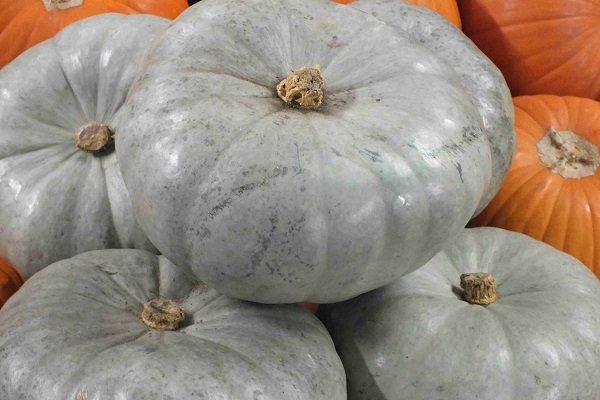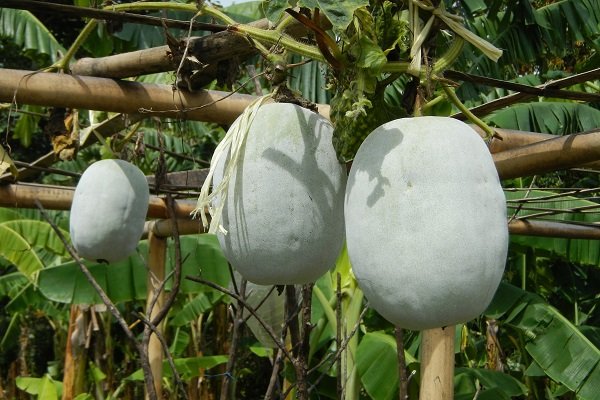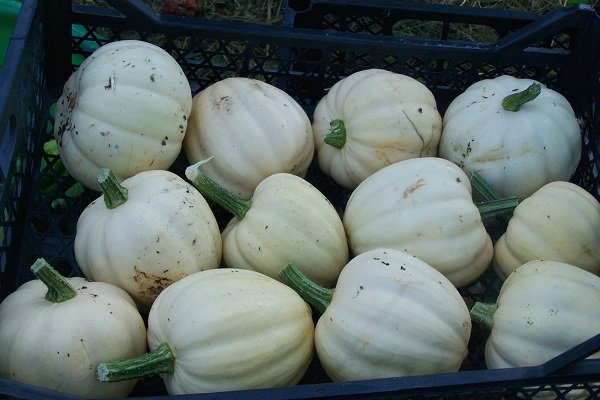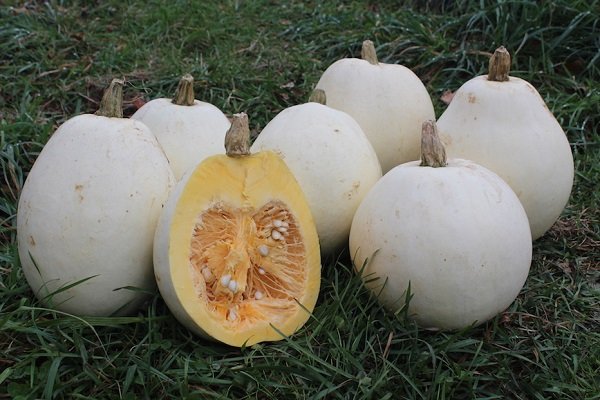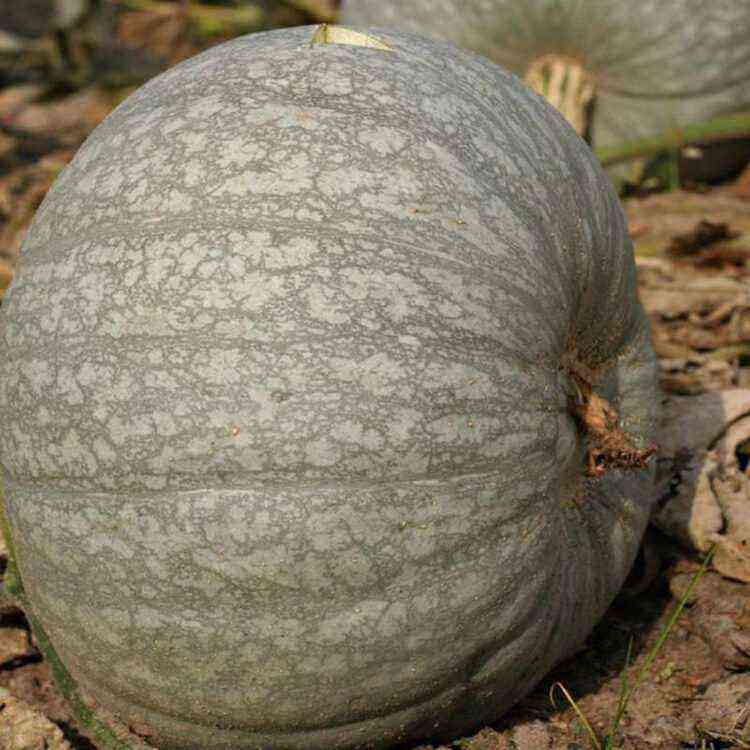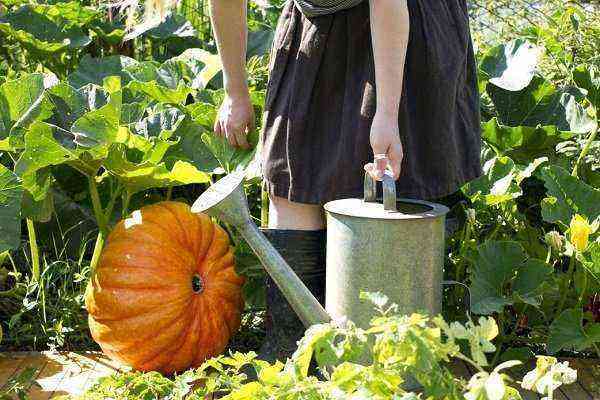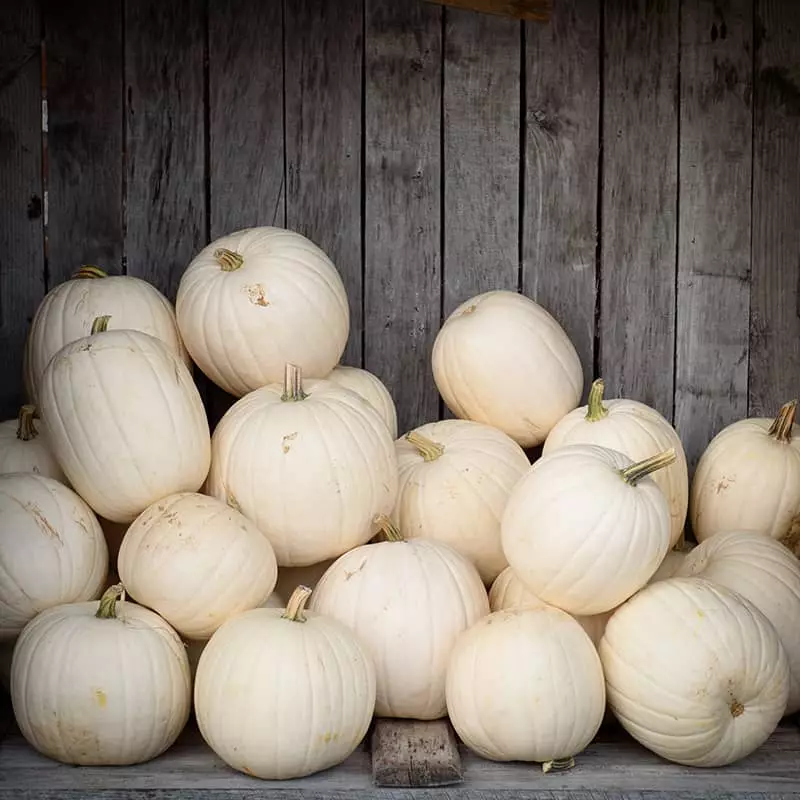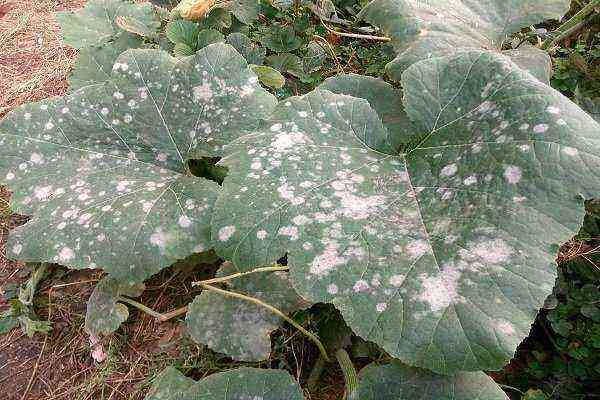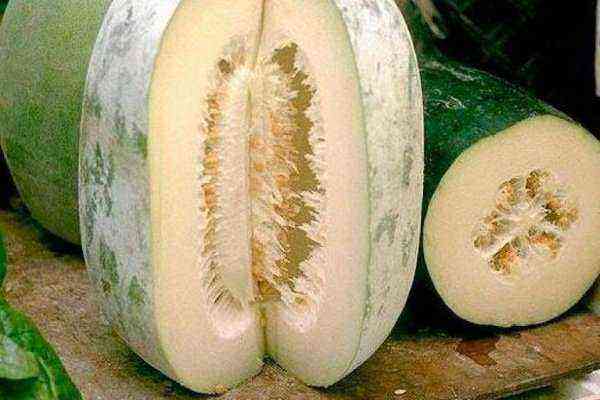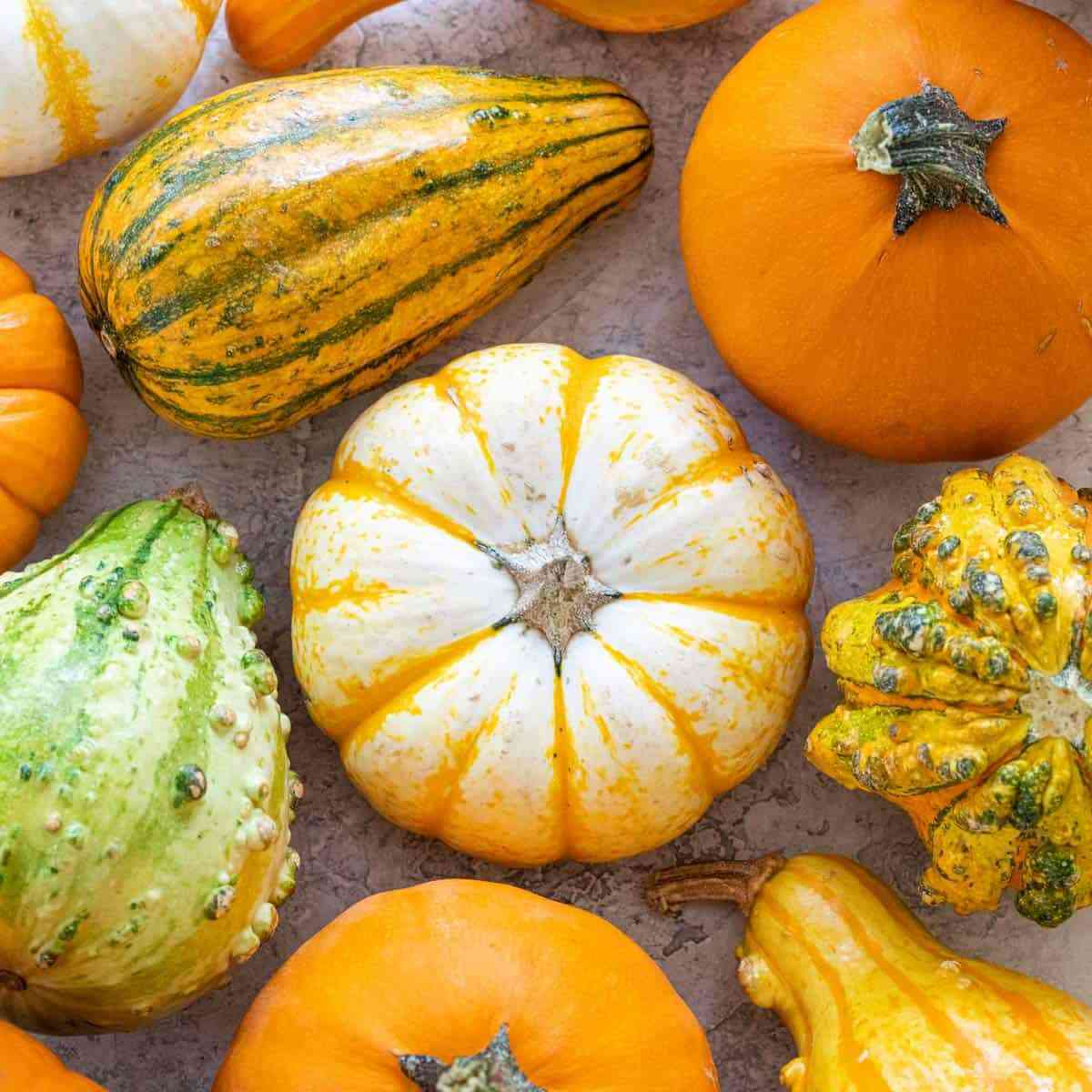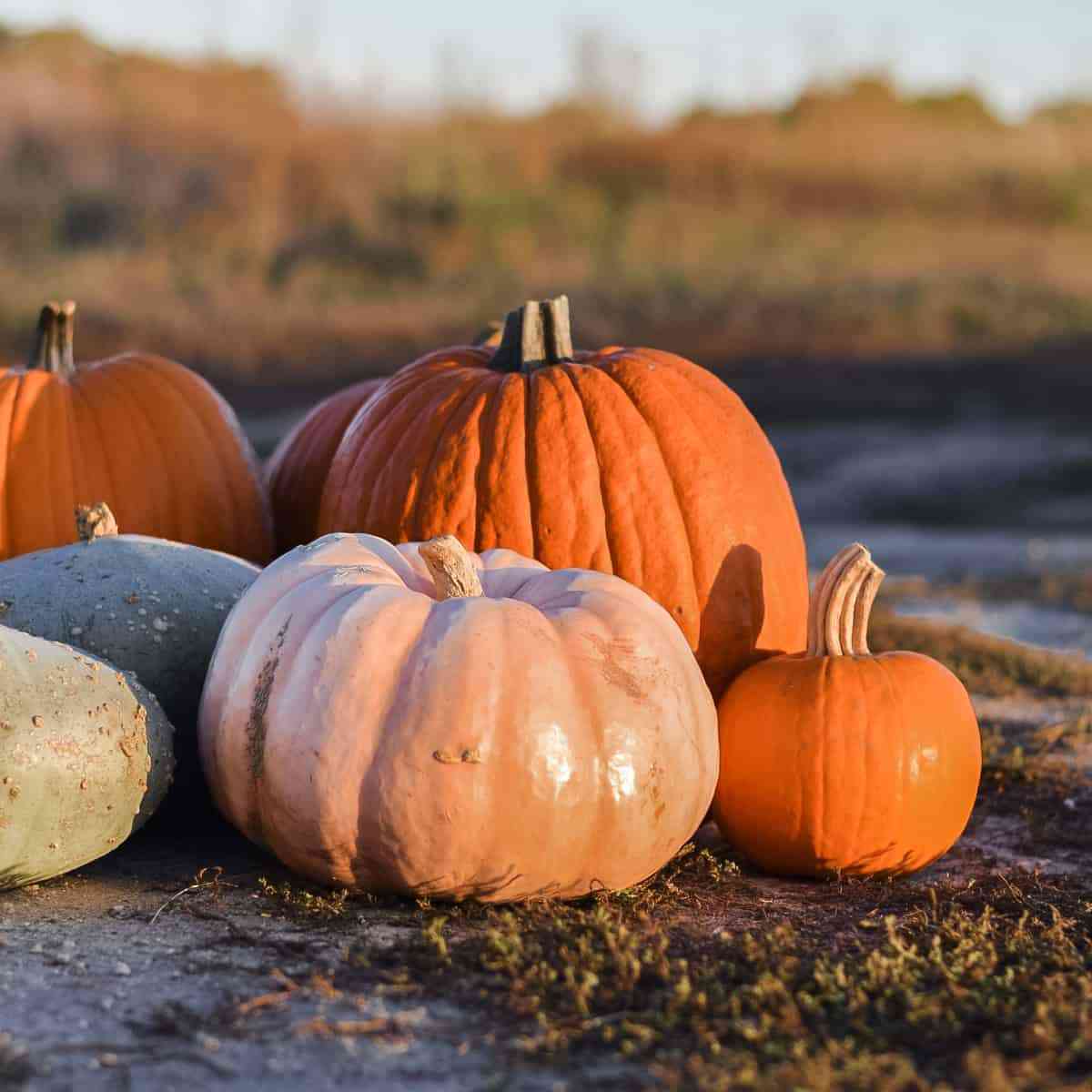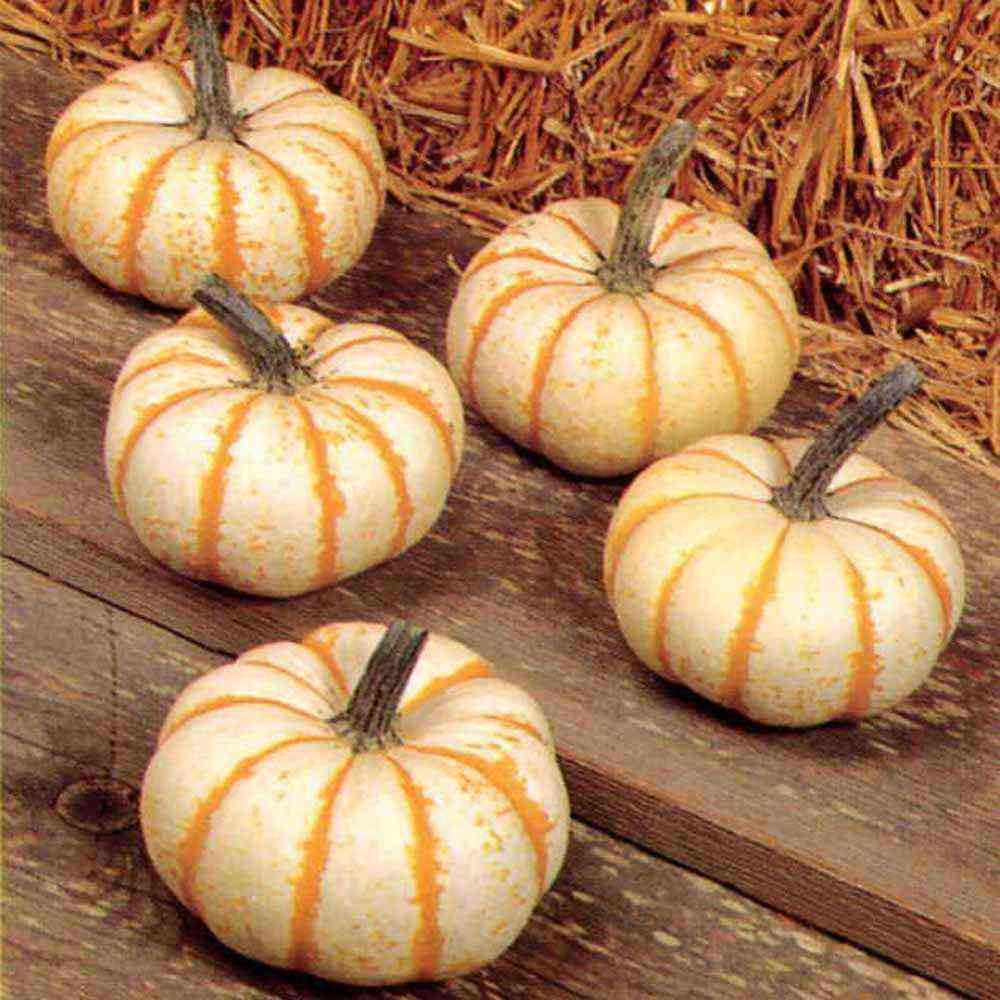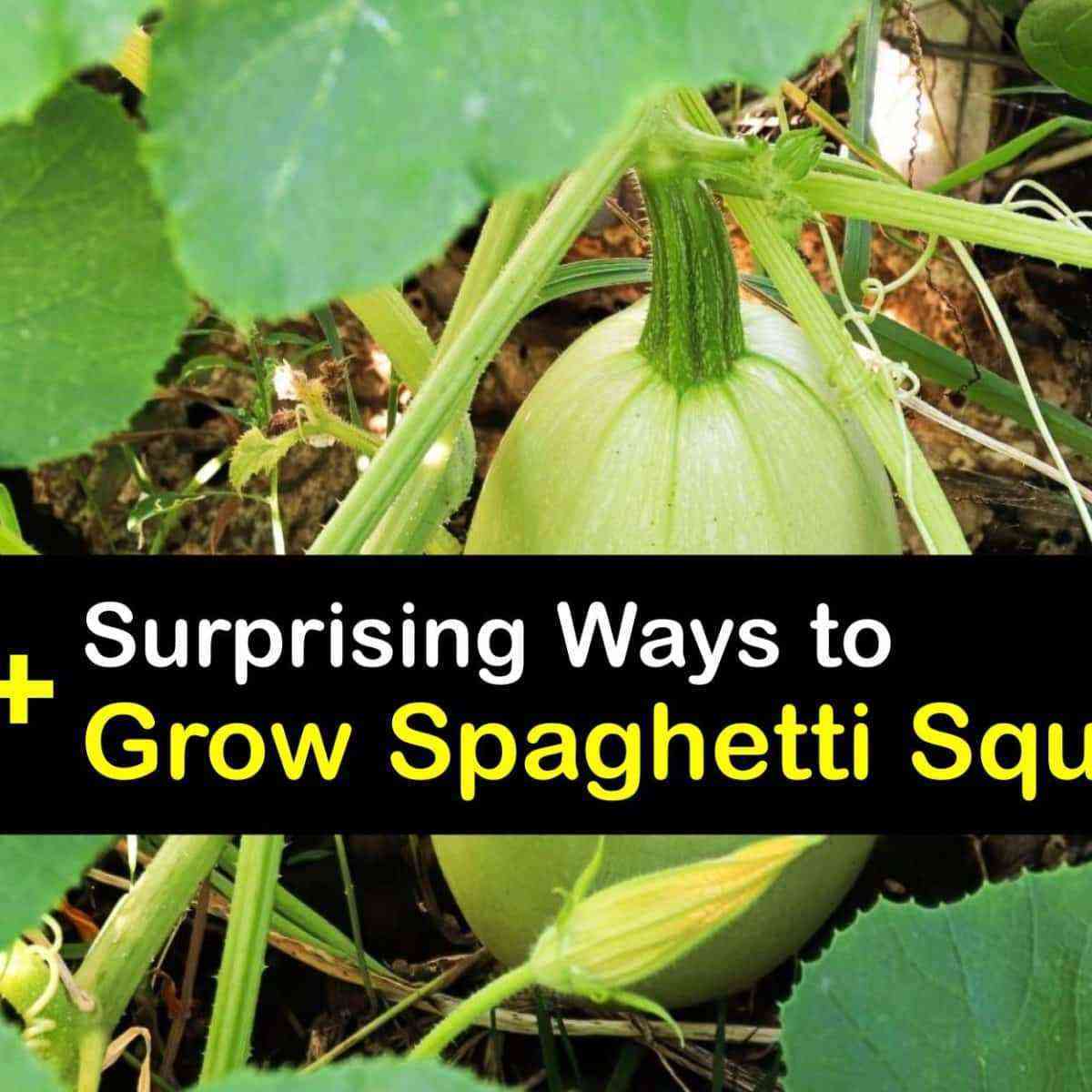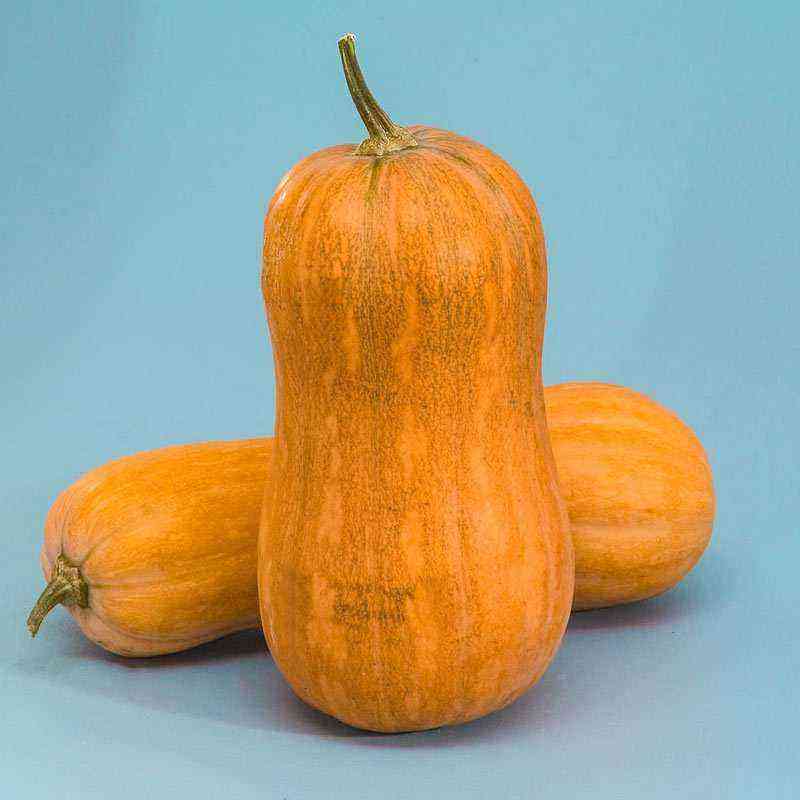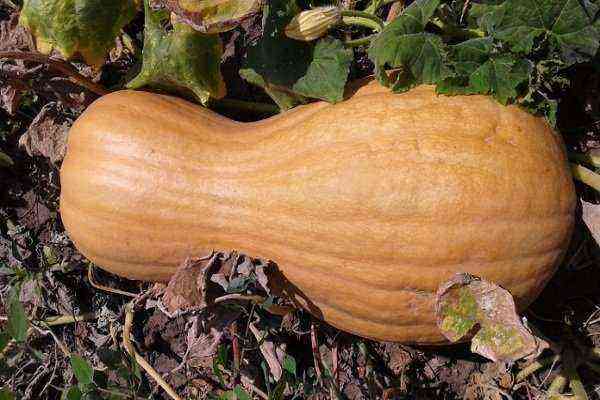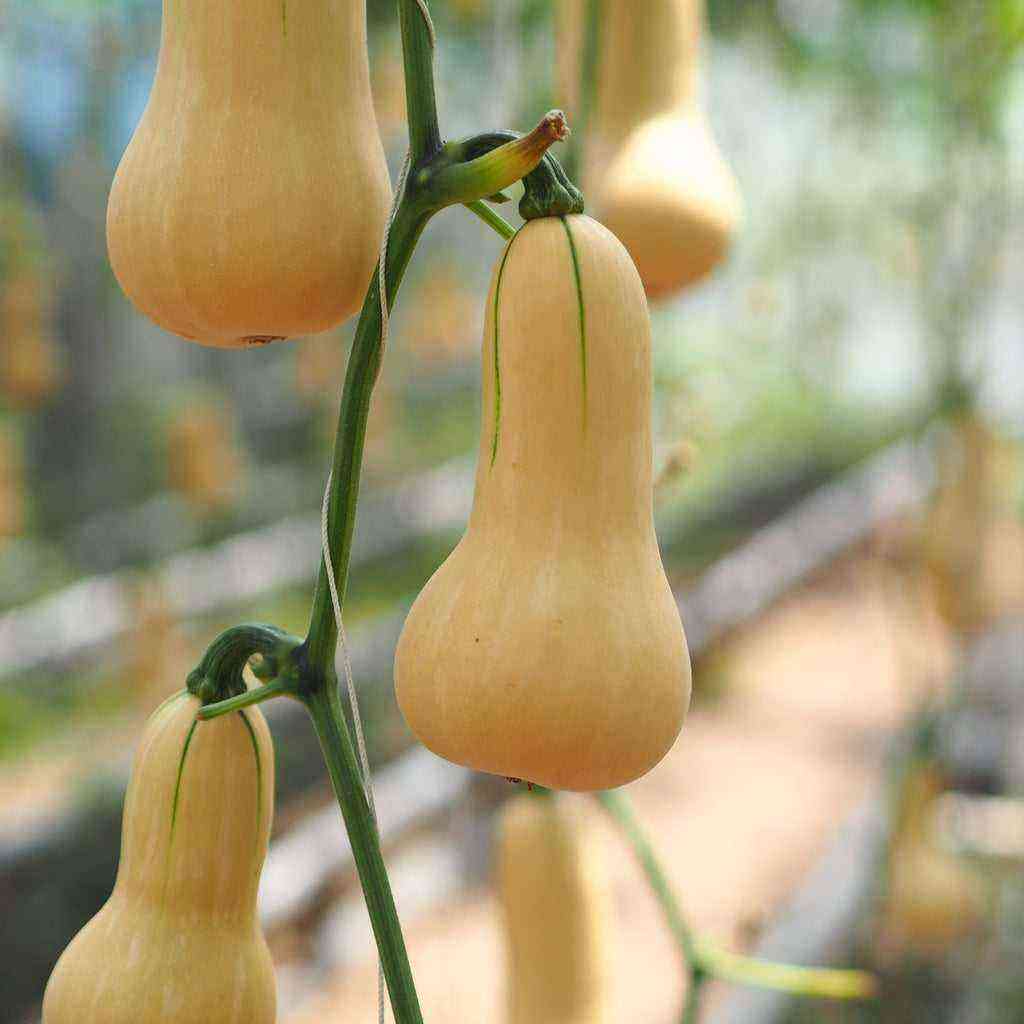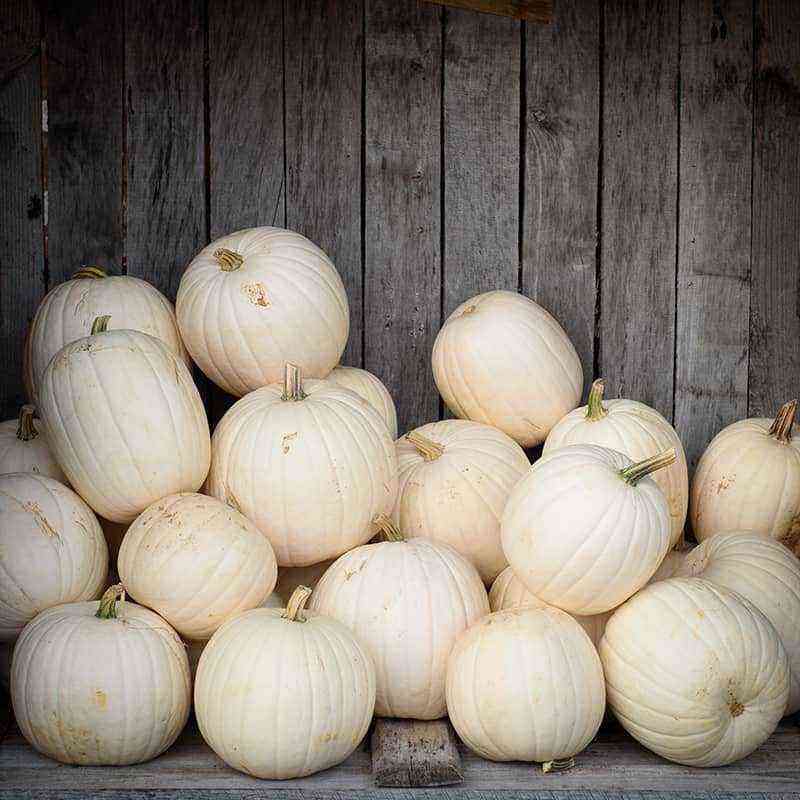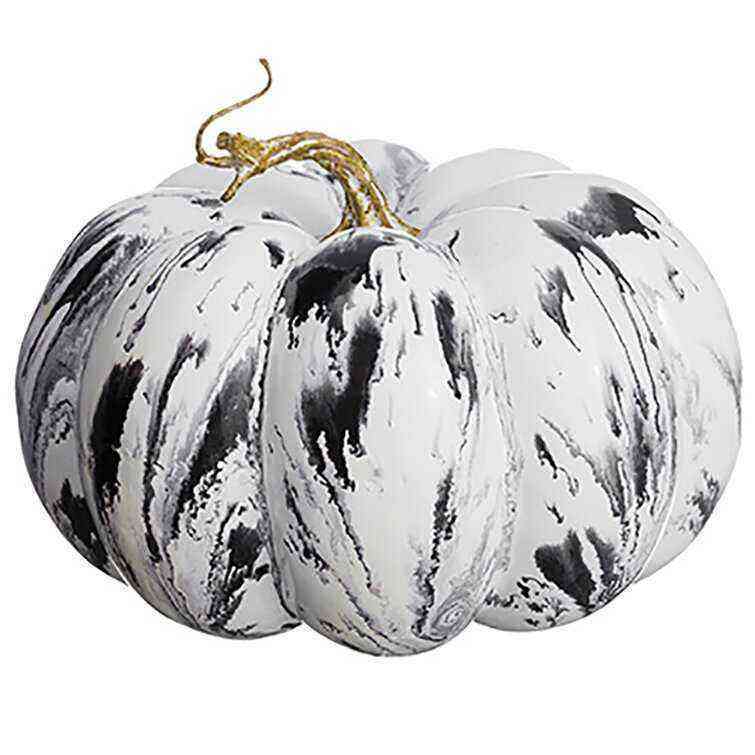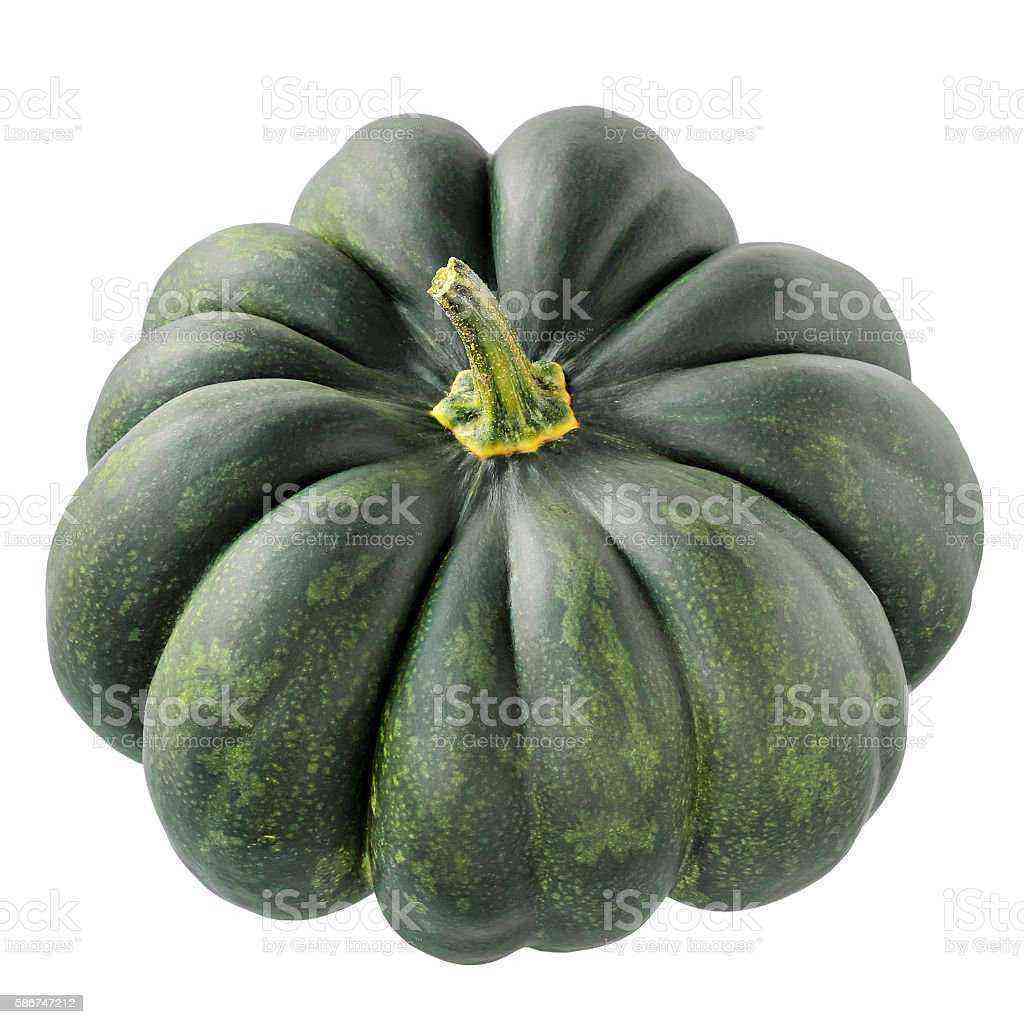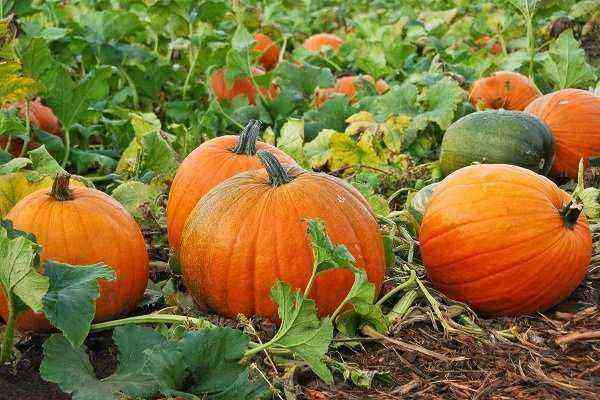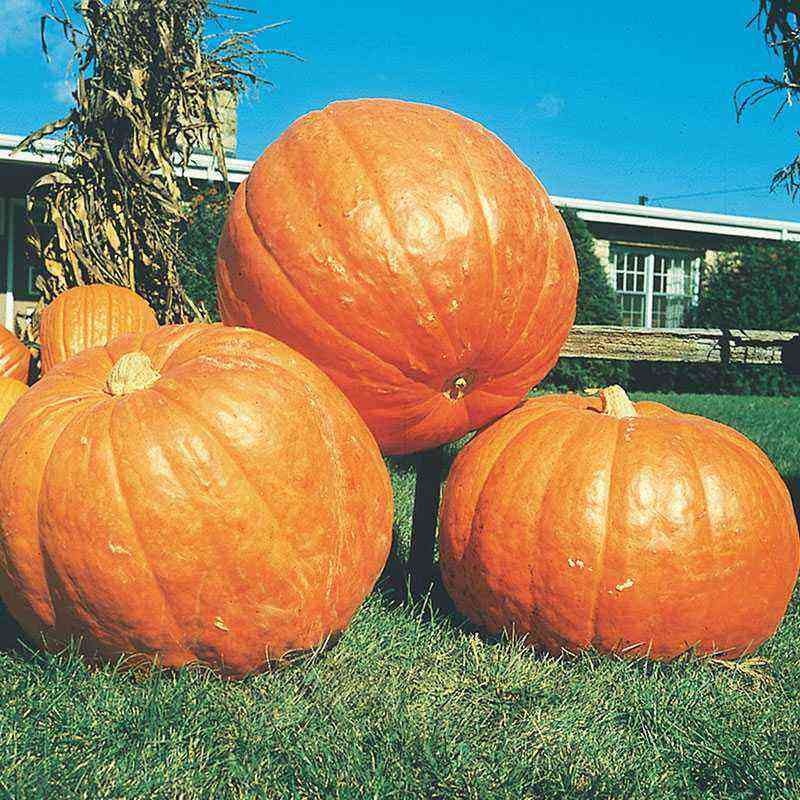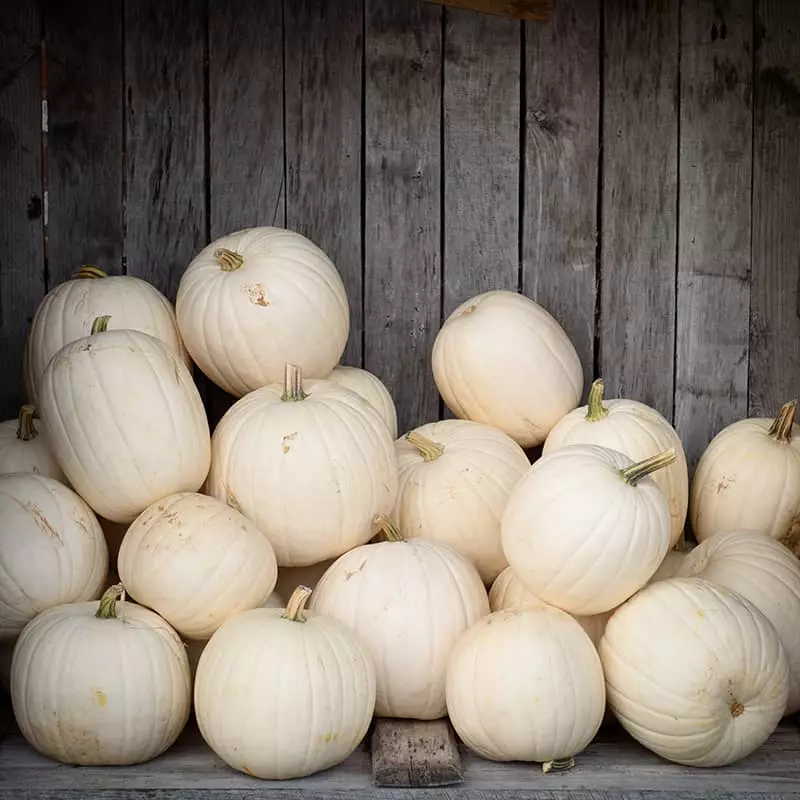Relatively recently, an exotic miracle appeared in our country – a white pumpkin, which is not only unusual in terms of external indicators, but also has a lot of useful substances. White color appears more often only on the outside. Many summer residents claim that a vegetable, like an ordinary pumpkin, is unpretentious in growing, but has its own characteristics.
The history of the white gourd
Pumpkin cultures appeared sometime in 6000 BC (it is not known exactly, but +/- 1st century). There were various varieties and even light specimens were found, but they were more equated with “mutants”.
The white variety appeared thanks to the work of breeders in 2005. At the same time, developments began on breeding varieties of snow-white pumpkin.
For the first time, white pumpkins were bred on the island of Java, after which the seeds were transported to China and Japan, from where they reached Russia.
Varieties of white pumpkin
White pumpkins, like green, red, orange and others, are divided into 2 classes – bush and weaving. The former have short whips (up to 2 m), the latter are long (7-15 m), so that they can be tied to trellises and other supports.
White boron
The variety is selected in Africa, belongs to the table culture, is characterized by large fruit.
Other features:
- ripening period – medium, varies from 110 to 120 days;
- flesh – has a classic orange tint, quite dense, tastes like an exotic fruit mix;
- form – flattened-round, and strongly;
- peel – ribbed type (large segments are divided by small grooves), compacted, absolutely white at the end of the growing season, green at the beginning;
- purpose – use in raw, boiled, stewed, baked form;
- average weight – 14-15 kg in our region, on the African continent almost 2 times more (due to climate);
- seminal chamber – insignificant with large seeds, which are also covered with a white shell (experts also note the friability of the placenta).
White boron contains a high percentage of sugar, so sugar is not added during cooking.
The root system of the variety is massive, it penetrates into the deep layers, due to which, in the presence of closely spaced groundwater, the culture does not need frequent watering.
What is necessary for a high yield and obtaining the most sweet and tasty fruits:
- air temperature 29-35°C;
- low humidity level;
- the optimal region for growing is the Crimea, the Krasnodar Territory, the Lower Volga region;
- frequent loosening of the soil.
If you do not comply with the conditions, the pulp will be fresh. If you moisturize too often, carotene and sugar will wash out.
New Zealand
The variety has another name – Kruan Vangapara, which means long-term. According to external indicators, it resembles Bely Bor, but there are much fewer pumpkins. It bears fruit best in the Black Sea region. If grown in the Middle lane, greenhouse conditions will be required.
Other features:
- ripening period – about 110 days, which indicates the average ripeness of the variety;
- flesh – very thick, reaches up to 8-10 cm, separated from the peel by a ring of a light green hue, the edible part is orange, the taste is exotic;
- form – flattened-rounded;
- peel – segmented, white, but greenish at the beginning of the growing season;
- purpose – cooking any food, decorating the local area;
- average weight – 4-5 kg;
- seminal chamber – small, but with large white seeds.
Feature – the surface is covered with a whitish coating. The plant is very climbing, so it requires a garter. Other cultivation features:
- frequent hydration is necessary;
- frosts are not allowed;
- can be grown even in Siberia, but in a heated greenhouse;
- the soil is very fertile and loose;
- exposed to pests and diseases, therefore, pre-treatment with fungicides and insecticides.
The average air temperature is 22-24°C. In this case, the harvest is carried out earlier than 110 days.
Benincasa
The second name is wax, as the surface of the peel is covered with a thick wax layer. Despite this, light is reflected in bright light, which makes it look glossy. This plaque acts as a protective barrier against pests and fungal infections.
Sometimes gardeners refer to Benincasa as winter squash or Indian squash. It looks like a huge zucchini. Imported pumpkin from Asia. Scourges reach up to 4 m, there is a lot of pectin in the pulp.
Other features:
- ripening period – from 110– to 120 days;
- flesh – white with a slightly greenish tint, average thickness – about 6 cm, not too sweet, but very juicy;
- form – elongated;
- peel – slightly hairy in the middle of the growing season, smooth at the end, color – very light green with a snow-white tint;
- purpose – preparation of sauces, gravy and side dishes for fish and meat dishes;
- average weight – from 5 to 10 kg;
- seminal chamber – voluminous, but the seeds are small and yellowish.
Growing features:
- need a lot of sun;
- watering is carried out moderately (if moistened often, the plant rots, and the fruits become tasteless);
- easily survives during drought, therefore it is cultivated most often in the respective regions;
- the optimum air temperature is +23–+27°C.
white acorn
An early ripe variety grown in almost all regions of Russia. The plant is bushy, so the lashes reach a maximum of 2 m, and the ovaries are formed at the very base of the stems.
Other features:
- ripening period – 80-80 days;
- flesh – snow-white or light beige, unsweetened (there are no polysaccharides and carotenoids in the variety), the taste is pumpkin-potato, the density is medium;
- form – acorn-like with expansion at the stalk and narrowing on the other side;
- peel – ribbed, white or cream in color;
- purpose – as a side dish (cooks advise preparing the same dishes as from potatoes);
- average weight – 0,5-1 kg (serving size);
- seminal chamber – small with large seeds, light shade.
In cultivation and care, White Acorn is undemanding – all activities are standard, like any pumpkin.
The variety is stored for a long time, but experts do not recommend doing this, as the peel will become so stiff that it will not work to cut or chop the fruit. In such cases, the pumpkin is used as decoration.
Fortune
A mid-season crop intended for cultivation in the Crimea, the Krasnodar Territory, the Caucasus, as the variety is very thermophilic. If planted in the Middle lane and similar regions, the seedling method of sowing and the greenhouse method of cultivation are used.
Other features:
- ripening period – 100-120 days;
- flesh – orange and not very dense, moderate sweetness, neutral aftertaste;
- form – pear-shaped with a strong expansion from below;
- peel – even, smooth and snow-white;
- purpose – universal – cereals, potato dishes, casseroles, etc .;
- average weight – from 1 to 1,5 kg;
- seminal chamber – large with medium seeds.
The plant is powerful and climbing, so gardeners recommend tying up the whips, and not cutting them off. In cultivation, one problem arises – pollination. The fact is that the bulk of the bushes contain female pistils, and the male is not enough.
Other cultivation features:
- requires very fertile soil, so it can be grown even on compost heaps;
- does not tolerate cold and frost;
- the soil must always be moistened, for which the mulching method is used.
Like White Acorn, it is stored for a long time and hardens in the same way.
Crumb Bu
This is an ornamental type of pumpkin that is used in food. Intended for cultivation in the southern regions, but can be planted in the Moscow region, the Middle lane and Siberia (greenhouse conditions are observed for this). The plant is considered climbing, it was bred by American breeders-scientists.
Other features:
- ripening period – about 100 days;
- flesh – increased density with a neutral taste and aroma, low sugar content and a light shade;
- form – round and flattened;
- peel – compacted, ribbed, smooth and snow-white;
- purpose – dishes similar to potatoes (only young fruits are used for cooking);
- average weight – very small – 150-300 g;
- seminal chamber – big, small seeds.
Growing features:
- prefers moist soil, so watering is carried out regularly;
- not afraid of bacteriosis, but exposed to powdery mildew and pests.
The rind is very dense and hard, becoming stiff over time, so it cannot be stored for a long time if Baby Boo is used for cooking. For these reasons, the variety is most often used for decoration.
Distinctive features of white pumpkin
The main feature of any variety of white pumpkin is the snow-white or creamy surface of the fruit. The flesh can be different, but the most common is the classic orange or light. The shelf life of hybrids is at least 1 year, maximum 3.
Peculiarities of growing
Each variety of white pumpkin has its own cultivation principles. But there are also general rules that are characteristic of this type of culture:
- Landing method. In regions with a warm climate, the seeds are planted immediately in open ground, cool – first, seedlings are grown indoors, then transplanted into the garden, with cold – only in a greenhouse that is heated.
Experts do not recommend picking and transplanting, since white pumpkins are difficult to adapt after being transferred to a new place, so in medium regions, seedlings can be grown in temporary greenhouses, and when optimal temperatures are reached, simply remove the plastic film. - Soil indicators. White crops prefer neutral soil with pH values ranging from 6 to 7,5. The structure must be necessarily loose, since the pumpkin will not grow in heavy soil.
A mandatory requirement is increased fertility, therefore, before laying planting material, be sure to apply fertilizers in autumn and spring – organic matter (compost, manure, bird droppings) and minerals (Superphosphate and the like).
- The all-rounder. Strictly follow these rules. Especially with regard to pumpkin crops of a different shade. If they are planted next to a white variety, the white will over-pollinate and not produce the desired color.
- A place. The site should be exceptionally sunny. Since the root system is very strong and branched, the white pumpkin can be planted in places where waterlogging usually occurs, as a result of which it can be avoided.
At the same time, pay attention to a specific variety – some do not tolerate high humidity. White varieties easily tolerate the wind, so place the beds where other plants are contraindicated. - Planting scheme. The row spacing is about 2 m, the distance between the bushes in one row is 0,8-1 m.
- Temperature regime. The soil should warm up to a temperature of +13 to +15°C, air – 14-16°C.
Care instructions
Care requirements depend on the particular variety – some white pumpkins prefer an abundance of moisture, others, on the contrary, dryness. Here are some tips to keep in mind in all cases:
- to maintain a true white hue, apply organic fertilizers that do not affect the pigment change – the more satisfying the plant is, the more natural its color;
- do not let the bushes sink into the water and be in the soil with a dry crust on the surface – it is better to water moderately, cover with mulch material (straw, peat, hay, grass);
- loosen the ground more often – without oxygen, the root system dies;
- be sure to tie long-weaving varieties on trellises, otherwise the shoots will be confused with each other, which will disrupt the circulation of nutrients;
- plant nearby those crops that attract bees for pollination – sunflower, lavender, bee balm, etc .;
- apply fertilizer about 4-5 times during the entire growing season.
Collection and storage of white pumpkins
All white pumpkins differ from other varieties in the density of the skin, which becomes even rougher over time. For this reason, experienced gardeners recommend harvesting 10-14 days earlier before reaching technical maturity.
The pulp of such fruits will also be more tender and juicy, but the sweetness will still no longer be gained, since white pumpkins are slightly sweet.
Other special collection and storage rules:
- do not leave white vegetables in the garden for too long – in addition to the stiff crust, the color will also change (the surface will turn yellow, spots like freckles will appear on the peel);
- to check the level of ripeness, use the watermelon method – click on the pumpkin with your finger (the sound should be deaf), press the surface with your fingernail (in a ripe state, the skin is not damaged);
- from the vine, the fruits are cut with a knife so that a peduncle about 8-12 cm long remains;
- never tear out the pumpkin and do not twist it – this will disrupt the structure of the stalk, which reduces the shelf life and introduces bacteria;
- After cutting, spread the pumpkins in the open sun or in a well-ventilated area, leave to dry completely;
- then brush off the remaining dirt with a rag or brush;
- use a dry, cool and ventilated place for storage;
- if you need the seed part, cut the pumpkin, pull out the seeds with your hand, and use the flesh without the peel for other purposes;
- rinse the seeds, dry on a paper towel under natural conditions (about 7-9 days);
- if they are to be planted next year, store the seeds in paper bags, leave at room temperature or on the refrigerator door;
- if the seeds are needed for frying and subsequent use, immediately fry all the elements and only after that place them in glass jars, close the lid tightly, so that dampness does not penetrate.
Pests and diseases of white pumpkins
White squash varieties are considered hardy and resistant to many cucurbit diseases and pests. But if the agrotechnical conditions are not fully met, the following problems may arise:
- Aphid. It is localized on the green mass of the plant and flowers. An ordinary jet of water under powerful pressure will help get rid of the initial stages, then you will have to spray it with soapy water or run ladybugs on plants.
- Beetles. Usually these are squash and cucumber beetles. They are usually collected by hand and destroyed (burned, thrown into ammonia).
- Powdery mildew. Fungicides are used. It is urgent to take action, as the bacterium spreads quickly (through wind, insects, etc.).
- Zucchini yellow mosaic. If the virus infects a pumpkin at an immature age, the bush dies. For disposal, fungicidal preparations are also used.
To prevent infection, carry out preventive treatment, starting from the moment the first true leaves are formed. On sale there is a huge amount of not only fungicides, but also insecticides against pests – special for pumpkin crops, universal.
White pumpkin has a beautiful decorative color, most often it is pale snow-white, which cannot but decorate a garden bed and landscape design. The main thing is to choose the right variety (based on climatic conditions and other indicators) and comply with agrotechnical requirements.
